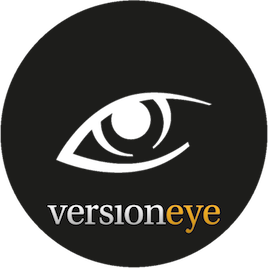Mock sample for your project: Medcorder Nearby Doctor API
Integrate with "Medcorder Nearby Doctor API" from medcorder.com in no time with Mockoon's ready to use mock sample
Medcorder Nearby Doctor API
medcorder.com
Version: 1.0.0
Integrate third-party APIs faster by using "Medcorder Nearby Doctor API" ready-to-use mock sample. Mocking this API will allow you to start working in no time. No more accounts to create, API keys to provision, accesses to configure, unplanned downtime, just work.
Improve your integration tests by mocking third-party APIs and cover more edge cases: slow response time, random failures, etc.
Description
Returns doctors near a client given a lat/lon and autocomplete text.
Other APIs in the same category
Department of Legal Metrology, Uttar Pradesh
apisetu.gov.in
Licenses issued by Department of Legal Metrology, Uttar Pradesh can be pulled by citizens into their DigiLocker accounts.

Available API endpoints
versioneye.com
VersionEye is a cross-platform search engine for free/libre/open source software libraries.
Health Repository Provider Specifications for HIP
The following are the specifications for the APIs to be implemented at the Health Repository end if an entity is only serving the role of a HIP. The specs are essentially duplicates from the Gateway and Health Repository, but put together so as to make it clear to HIPs which set of APIs they should implement to participate in the network.

U.S. EPA Enforcement and Compliance History Online (ECHO) - All Data
Enforcement and Compliance History Online (ECHO) is a tool developed and maintained by EPA's Office of Enforcement and Compliance Assurance for public use. ECHO provides integrated compliance and enforcement information for over 1 million regulated facilities nationwide.
ECHO Rest Services provide multiple service endpoints, each with specific capabilities, to search and retrieve data on facilities regulated as Clean Air Act (CAA) stationary sources, Clean Water Act (CWA) dischargers, Resource Conservation and Recovery Act (RCRA) hazardous waste generators/handlers, and Safe Drinking Water Act (SDWA) public water systems. Data of interest from other EPA sources, such as the Toxics Release Inventory, is also supplied for context.
\
The getfacilities, getmap, getqid, and getdownload end points are meant to be used together, while the enhanced getfacilityinfo end point is self contained.
The getfacilityinfo end point returns either an array of state, county or zip clusters with summary statistics per cluster or an array of facilities.
\
The recommended use scenario for getfacilities, getqid, getmap, and getdownoad is:
\
1) Use getfacilities to validate passed query parameters, obtain summary statistics and to obtain a queryid (QID). QIDs are time sensitive and will be valid for approximately 30 minutes.
2) Use get_qid, with the returned QID, to paginate through arrays of facility results.
3) Use get_map, with the returned QID, to zoom in/out and pan on the clustered and individual facility coordinates that meet the QID query criteria.
4) Use get_download, with the returned QID, to generate a Comma Separated Value (CSV) file of facility information that meets the QID query criteria.
\
\
Use the qcolumns parameter to customize your search results. Use the Metadata service endpoint for a list of available output objects, their Column Ids, and their definitions to help you build your customized output.
\
Additional ECHO Resources: Web Services, About ECHO's Data, Data Downloads
ECHO Rest Services provide multiple service endpoints, each with specific capabilities, to search and retrieve data on facilities regulated as Clean Air Act (CAA) stationary sources, Clean Water Act (CWA) dischargers, Resource Conservation and Recovery Act (RCRA) hazardous waste generators/handlers, and Safe Drinking Water Act (SDWA) public water systems. Data of interest from other EPA sources, such as the Toxics Release Inventory, is also supplied for context.
\
The getfacilities, getmap, getqid, and getdownload end points are meant to be used together, while the enhanced getfacilityinfo end point is self contained.
The getfacilityinfo end point returns either an array of state, county or zip clusters with summary statistics per cluster or an array of facilities.
\
The recommended use scenario for getfacilities, getqid, getmap, and getdownoad is:
\
1) Use getfacilities to validate passed query parameters, obtain summary statistics and to obtain a queryid (QID). QIDs are time sensitive and will be valid for approximately 30 minutes.
2) Use get_qid, with the returned QID, to paginate through arrays of facility results.
3) Use get_map, with the returned QID, to zoom in/out and pan on the clustered and individual facility coordinates that meet the QID query criteria.
4) Use get_download, with the returned QID, to generate a Comma Separated Value (CSV) file of facility information that meets the QID query criteria.
\
\
Use the qcolumns parameter to customize your search results. Use the Metadata service endpoint for a list of available output objects, their Column Ids, and their definitions to help you build your customized output.
\
Additional ECHO Resources: Web Services, About ECHO's Data, Data Downloads

Archive API
The Archive API provides lists of NYT articles by month going back to 1851. You can use it to build your own local database of NYT article metadata.

Auckland Museum API
This is technical documentation for the Auckland Museum API
Ministry of Petroleum and Natural Gas(BPCL)
apisetu.gov.in
eSubscription Voucher for LPG connections provided by BPCL (https://bharatpetroleum.com/) are made available to citizens in their DigiLocker accounts.

U.S. EPA Enforcement and Compliance History Online (ECHO) - Clean Air Act
Enforcement and Compliance History Online (ECHO) is a tool developed and maintained by EPA's Office of Enforcement and Compliance Assurance for public use. ECHO provides integrated compliance and enforcement information for over 1 million regulated facilities nationwide.
Air Rest Services provides multiple service endpoints, each with specific capabilities, to search and retrieve data on facilities regulated under the Clean Air Act (CAA). The returned results reflect data drawn from EPA's ICIS-Air database.
The getfacilities, getmap, getqid, and getdownload end points are meant to be used together, while the enhanced getfacilityinfo end point is self contained.
The getfacilityinfo end point returns either an array of state, county or zip clusters with summary statistics per cluster or an array of facilities.
The recommended use scenario for getfacilities, getqid, getmap, and getdownoad is:
1) Use getfacilities to validate passed query parameters, obtain summary statistics and to obtain a queryid (QID). QIDs are time sensitive and will be valid for approximately 30 minutes.
2) Use get_qid, with the returned QID, to paginate through arrays of facility results.
3) Use get_map, with the returned QID, to zoom in/out and pan on the clustered and individual facility coordinates that meet the QID query criteria.
4) Use get_download, with the returned QID, to generate a Comma Separated Value (CSV) file of facility information that meets the QID query criteria.
Use the qcolumns parameter to customize your search results. Use the Metadata service endpoint for a list of available output objects, their Column Ids, and their definitions to help you build your customized output.
Additional ECHO Resources: Web Services, About ECHO's Data, Data Downloads
Air Rest Services provides multiple service endpoints, each with specific capabilities, to search and retrieve data on facilities regulated under the Clean Air Act (CAA). The returned results reflect data drawn from EPA's ICIS-Air database.
The getfacilities, getmap, getqid, and getdownload end points are meant to be used together, while the enhanced getfacilityinfo end point is self contained.
The getfacilityinfo end point returns either an array of state, county or zip clusters with summary statistics per cluster or an array of facilities.
The recommended use scenario for getfacilities, getqid, getmap, and getdownoad is:
1) Use getfacilities to validate passed query parameters, obtain summary statistics and to obtain a queryid (QID). QIDs are time sensitive and will be valid for approximately 30 minutes.
2) Use get_qid, with the returned QID, to paginate through arrays of facility results.
3) Use get_map, with the returned QID, to zoom in/out and pan on the clustered and individual facility coordinates that meet the QID query criteria.
4) Use get_download, with the returned QID, to generate a Comma Separated Value (CSV) file of facility information that meets the QID query criteria.
Use the qcolumns parameter to customize your search results. Use the Metadata service endpoint for a list of available output objects, their Column Ids, and their definitions to help you build your customized output.
Additional ECHO Resources: Web Services, About ECHO's Data, Data Downloads
Uttarakhand State Board of School Education, Uttarakhand
apisetu.gov.in
Uttarakhand Board of School Education, Ramnagar (http://ubse.uk.gov.in/) has made available Class X (2018) & Class XII (2018) mark sheet-cum-certificate and migration certificates, which can be pulled by students into their DigiLocker accounts.

Times Newswire API
With the Times Newswire API, you can get links and metadata for Times articles and blog posts as soon as they are published on NYTimes.com. The Times Newswire API provides an up-to-the-minute stream of published items.
Cholamandalam MS General Insurance Company Ltd.
apisetu.gov.in
APIs provided by Cholamandalam MS General Insurance Company Ltd..

BC Laws
BC Laws is an electronic library providing free public access to the laws of British Columbia. BC Laws is hosted by the Queen's Printer of British Columbia and published in partnership with the Ministry of Justice and the Law Clerk of the Legislative Assembly.BC Laws contains a comprehensive collection of BC legislation and related materials. It is available on the internet in two forms:First: The library is available as a web site in which users can browse and search the laws of British Columbia.Second: The library is available as a portal to legislation in raw XML data format, accessible via the BC Laws API2. This direct access to raw data is intended to enable third parties to build or add their own custom applications based on the structure of the data and all the associated search functionality inherent in that structure. The BC Laws website itself is an example of one such application.
Please note that you may experience issues when submitting requests to the delivery or test environment if using this OpenAPI specification in other API console viewers.
Please note that you may experience issues when submitting requests to the delivery or test environment if using this OpenAPI specification in other API console viewers.